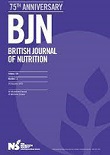Health-related cues on the packages of processed and ultra-processed products: prevalence and policy implications
Dublin Core
Título
Health-related cues on the packages of processed and ultra-processed products: prevalence and policy implications
Tema
EMBALAJE
ETIQUETADO
MARKETING
NUTRICION
SALUD
POLITICA ALIMENTARIA
ADVERTENCIAS NUTRICIONALES
BIBLIOGRAFIA NACIONAL QUIMICA
2022
Abstract
The information included on food packages has a crucial role in influencing consumer product associations and purchase decisions. In particular, visual and textual cues on processed and ultra-processed products can convey health-related associations that influence consumer healthiness perception and purchase decisions. In this context, the present work aimed to explore the use of health-related cues on the packages of processed and ultra processed products sold in Uruguay to provide insights for policy making. A total of 3813 products from 34 different food categories found in four of the most important supermarket chains in Uruguay were surveyed. The textual and visual information included on the packages as well as the nutritional composition of the products were analyzed. Results showed that 67% of the products included at least one health-related cue. Pictures of culinary ingredients, natural and minimally processed foods were the most frequent health-related cue, followed by references to naturalness and claims related to critical nutrients. The prevalence of health-related cues largely differed across product categories, ranging from 100% to 17%. The relationship between the presence of health-related cues on the packages and the excessive content of nutrients associated with non-communicable diseases was assessed using a gradient boosting model, which showed limited predictive ability. This suggests that the inclusion of health-related cues on food packages was not strongly related to the nutritional composition of products and therefore cannot be regarded as a healthiness indicator. These results stress the need of develop stricter labeling regulations to protect consumers from misleading information.
Autor
Alcaire, Florencia
Vidal, Leticia
Machín, Leandro
Antúnez, Lucía
Giménez, Ana
Curutchet, María Rosa
Ares, Gastón
Fuente
British Journal of Nutrition, 2022
Editor
The nutrition society
Fecha
2022
Derechos
Información sobre Derechos de Autor
(Por favor lea este aviso antes de abrir los documentos u objetos)
La legislación uruguaya protege el derecho de autor sobre toda creación literaria, científica o artística, tanto en lo que tiene que ver con sus derechos morales, como en lo referente a los derechos patrimoniales con sujeción a lo establecido por el derecho común y las siguientes leyes (LEY 9.739 DE 17 DE DICIEMBRE DE 1937 SOBRE PROPIEDAD LITERARIA Y ARTISTICA CON LAS MODIFICACIONES INTRODUCIDAS POR LA LEY DE DERECHO DE AUTOR Y DERECHOS CONEXOS No. 17.616 DE 10 DE ENERO DE 2003, LEY 17.805 DE 26 DE AGOSTO DE 2004, LEY 18.046 DE 24 DE OCTUBRE DE 2006 LEY 18.046 DE 24 DE OCTUBRE DE 2006)
ADVERTENCIA: La consulta de este documento queda condicionada a la aceptación de las siguientes condiciones de uso: Este documento es únicamente para usos privados enmarcados en actividades de investigación y docencia. No se autoriza su reproducción con fines de lucro. Esta reserva de derechos afecta tanto los datos del documento como a sus contenidos. En la utilización o cita de partes debe indicarse el nombre de la persona autora.Formato
PDF
Idioma
Inglés
Tipo
Artículo
Identificador
10.1017/S000711452200318X
Document Item Type Metadata
Original Format
PDF
- Fecha de agregación
- December 12, 2022
- Colección
- Bibliografía Nacional Química
- Tipo de Elemento
- Document
- Etiquetas
- Advertencias Nutricionales, Embalaje, Etiquetado, Marketing, Nutrición, Política Alimentaria, Salud
- Citación
- Alcaire, Florencia, “Health-related cues on the packages of processed and ultra-processed products: prevalence and policy implications,” RIQUIM - Repositorio Institucional de la Facultad de Química - UdelaR, accessed July 26, 2024, https://riquim.fq.edu.uy/items/show/6580.
- Archivos

